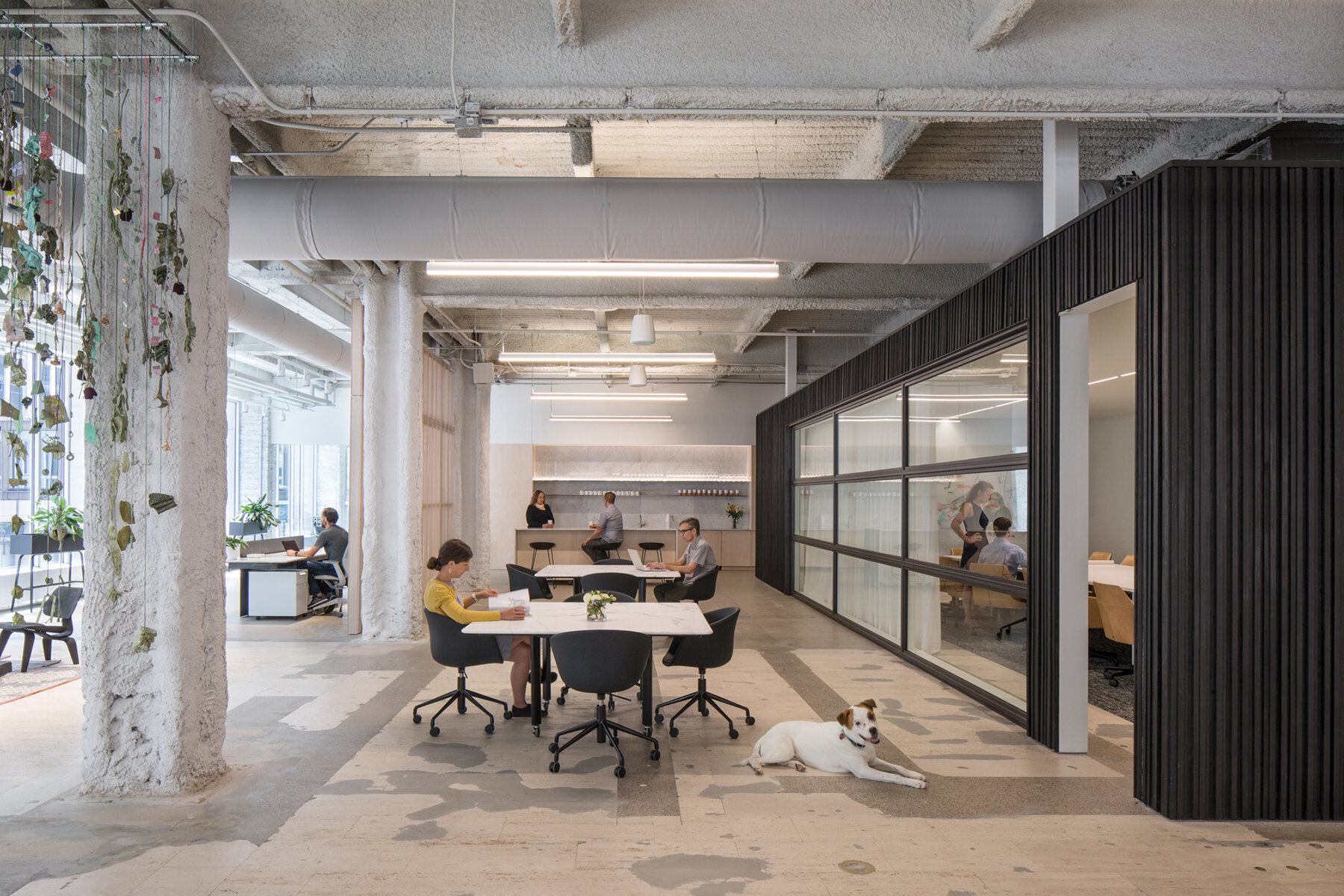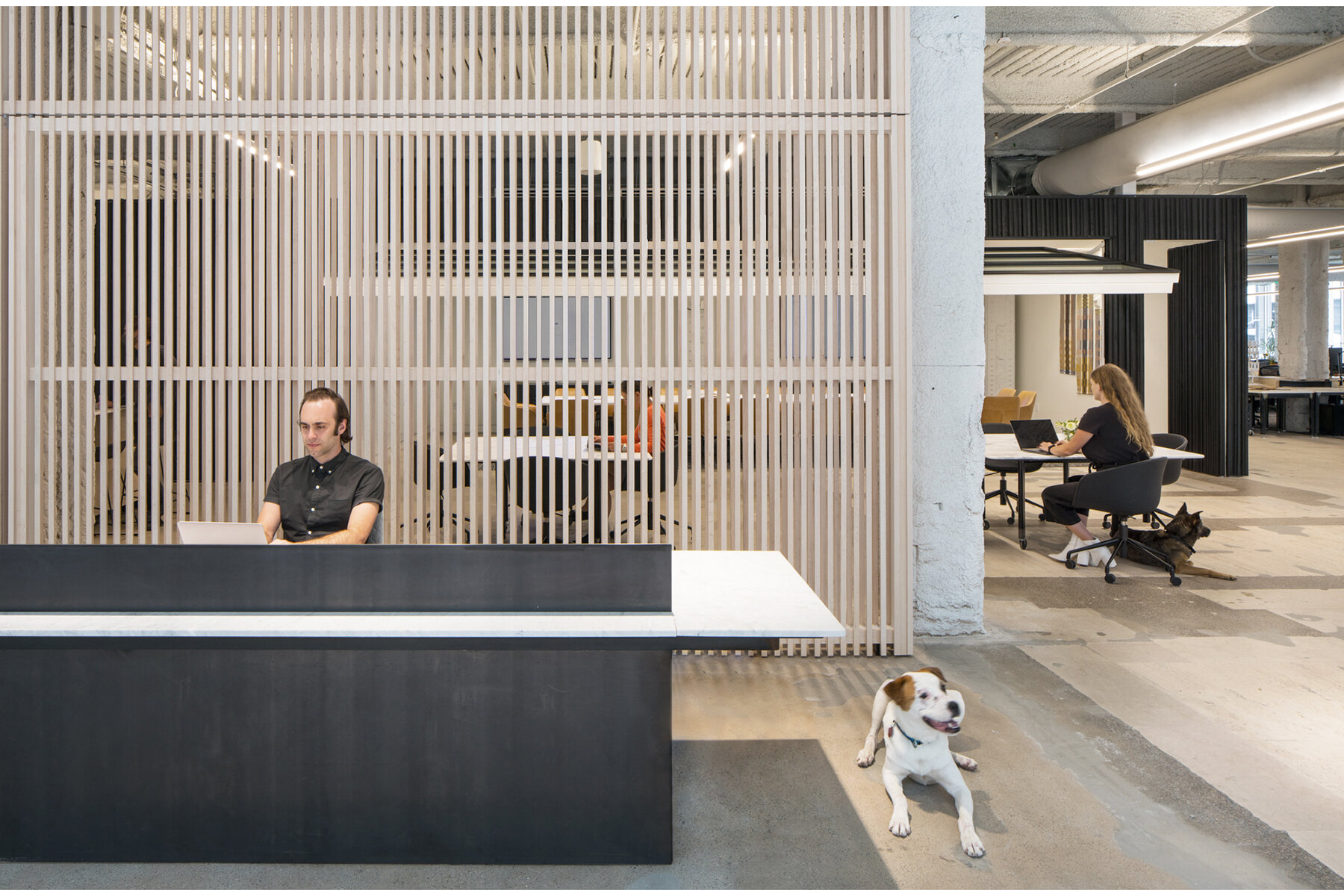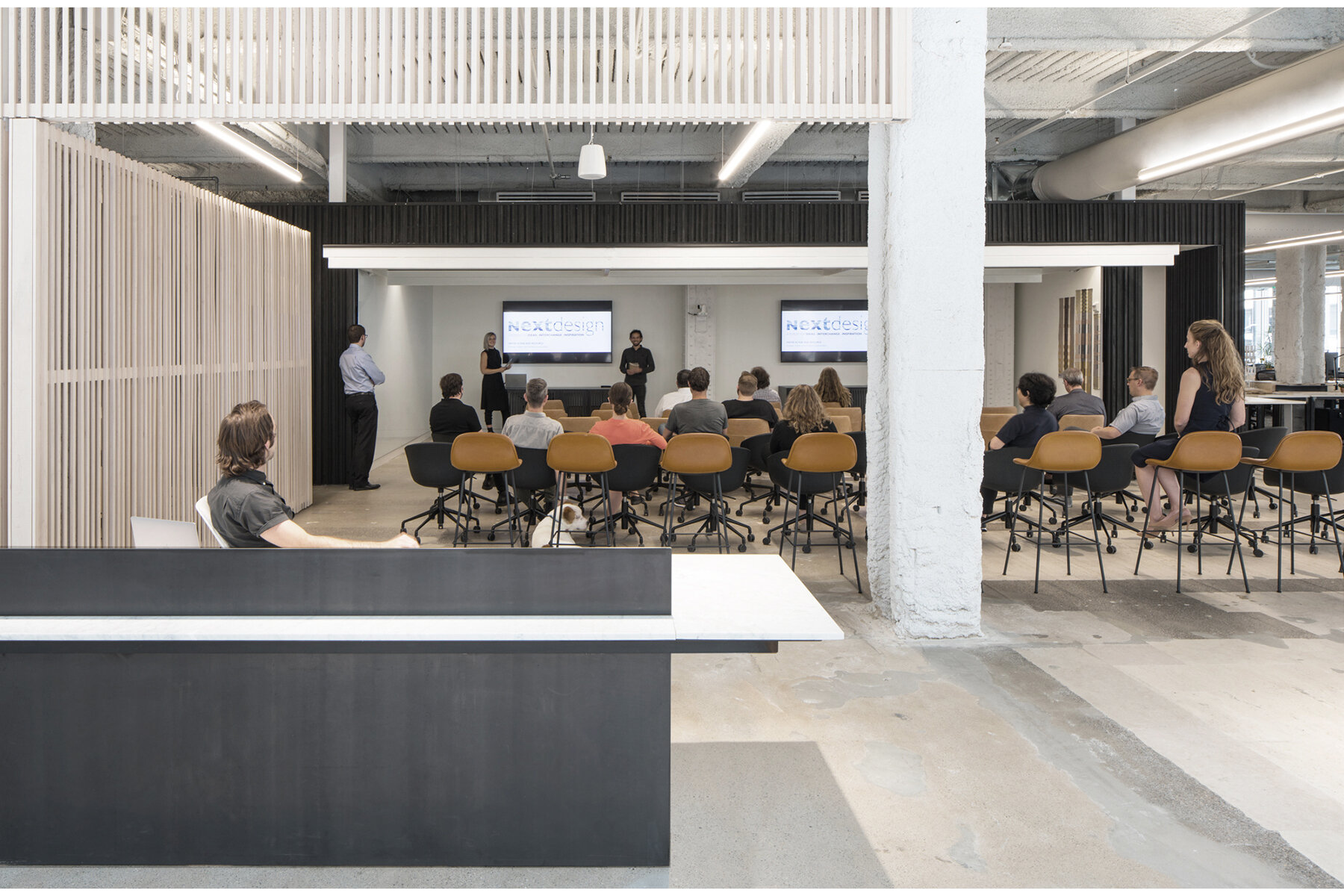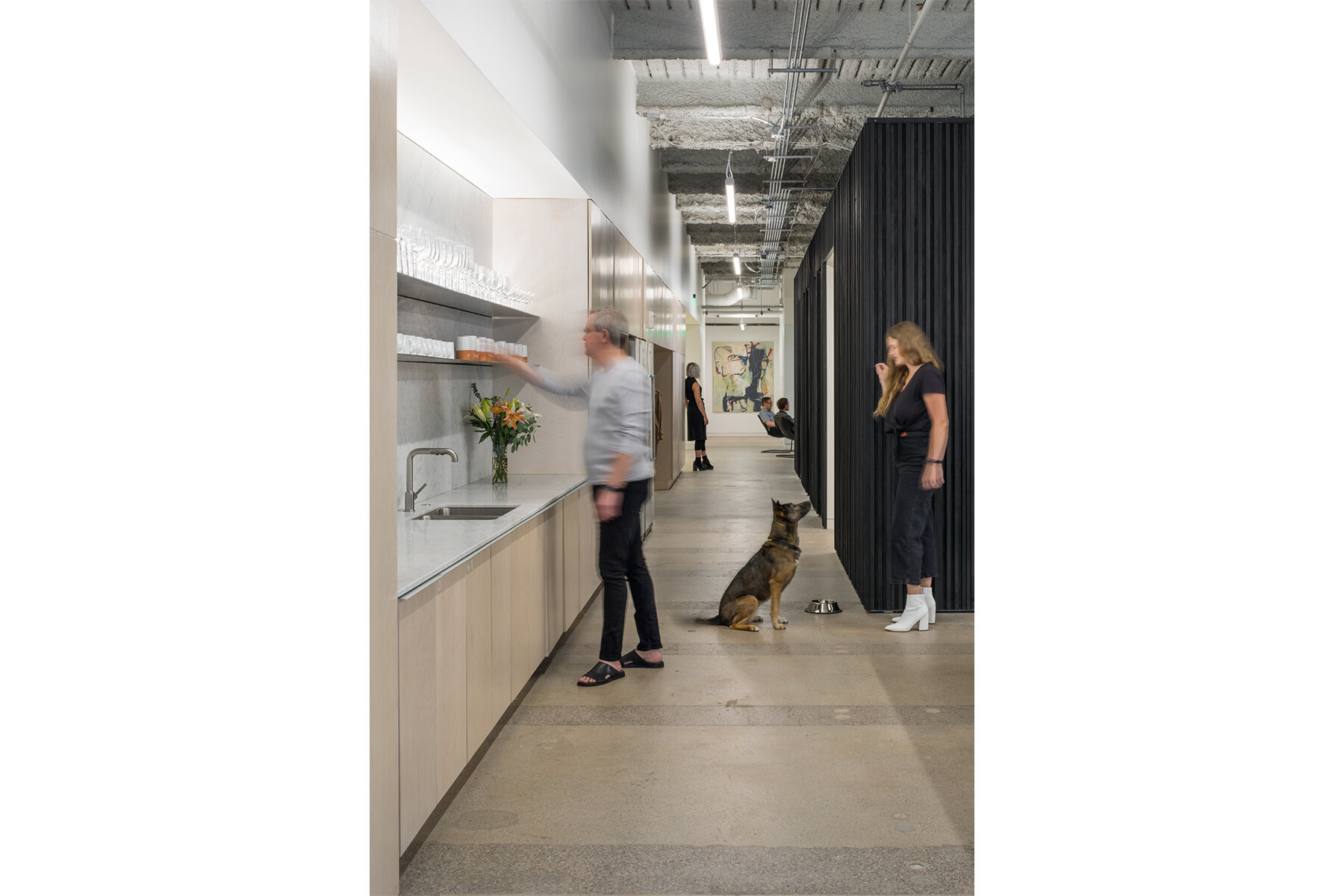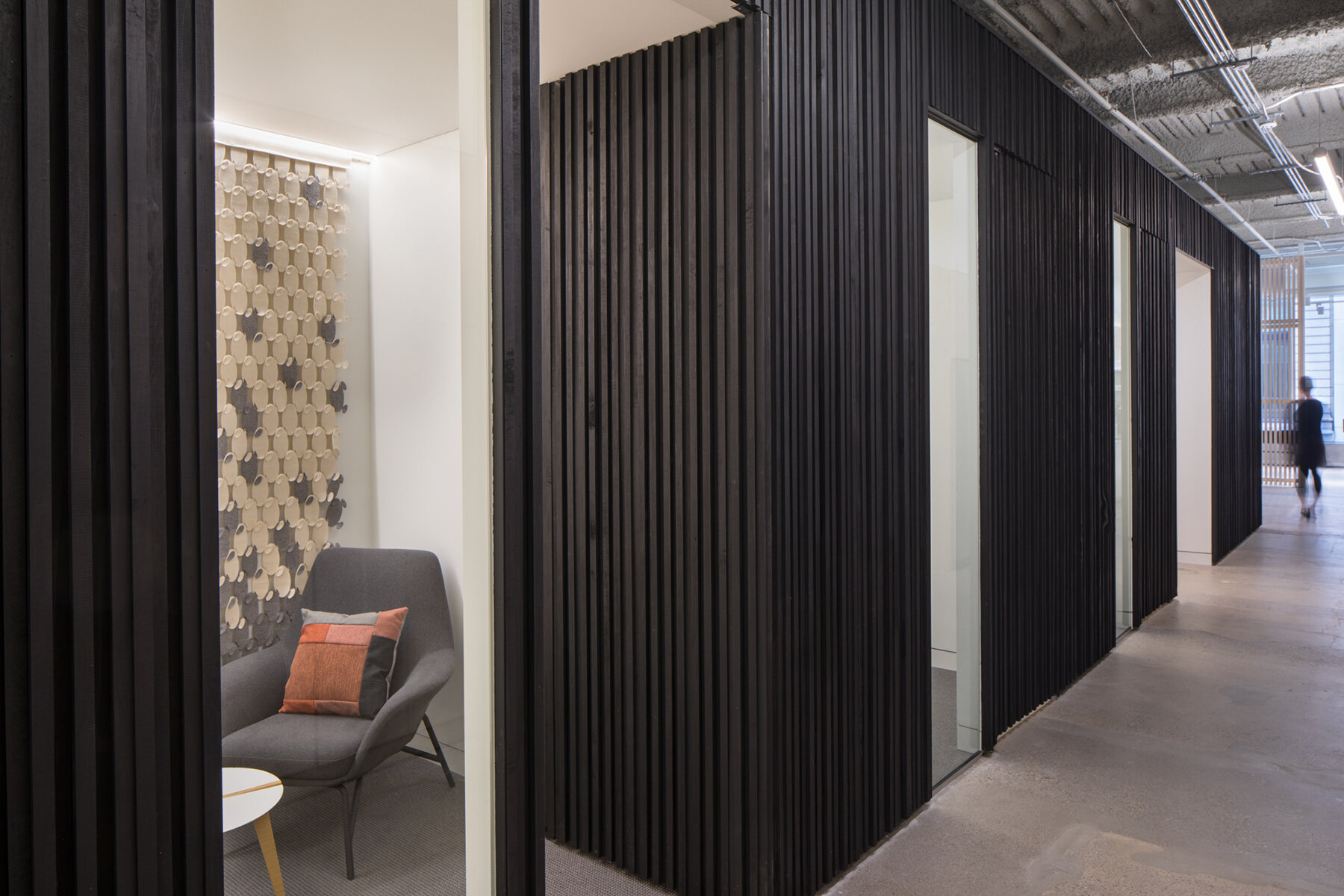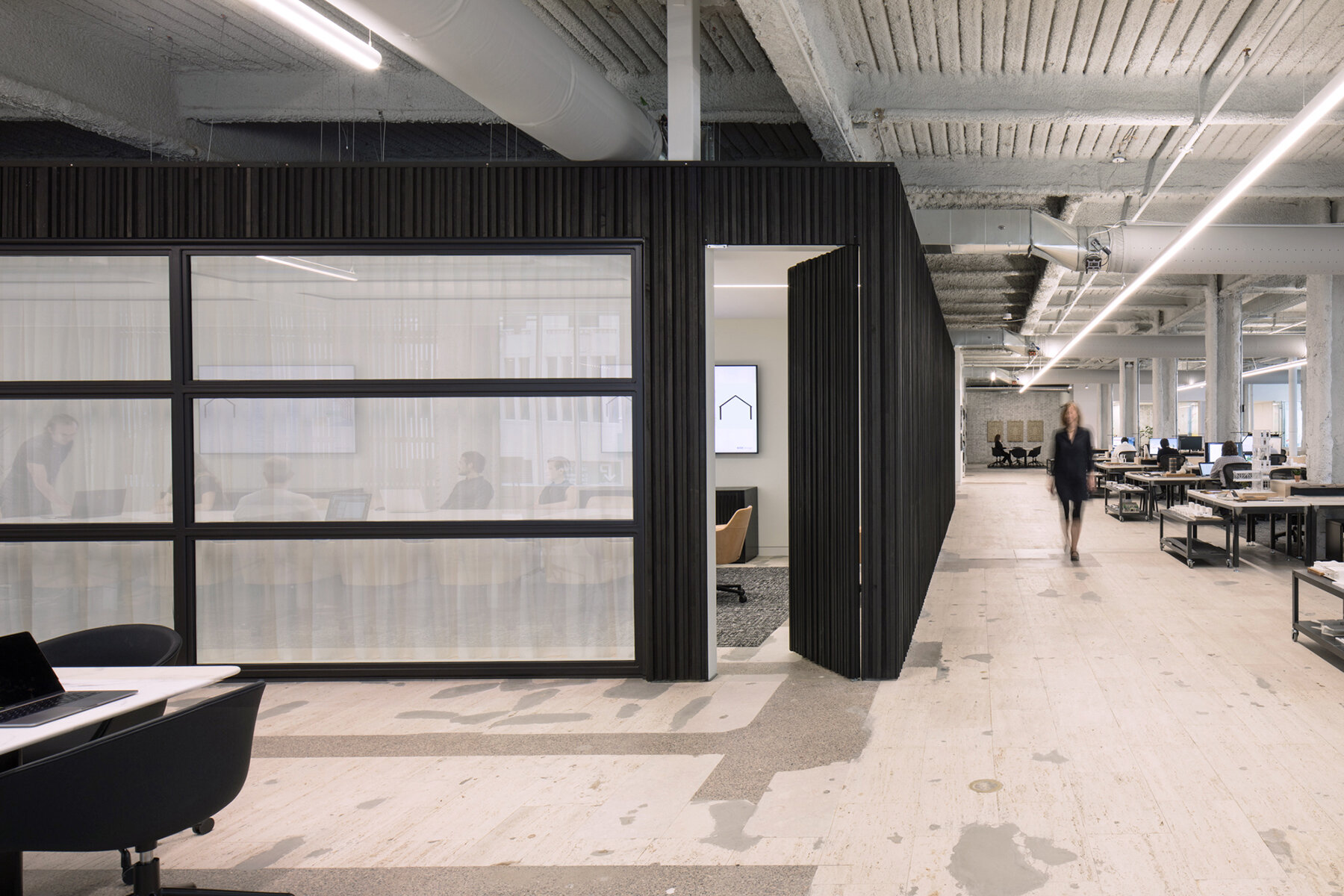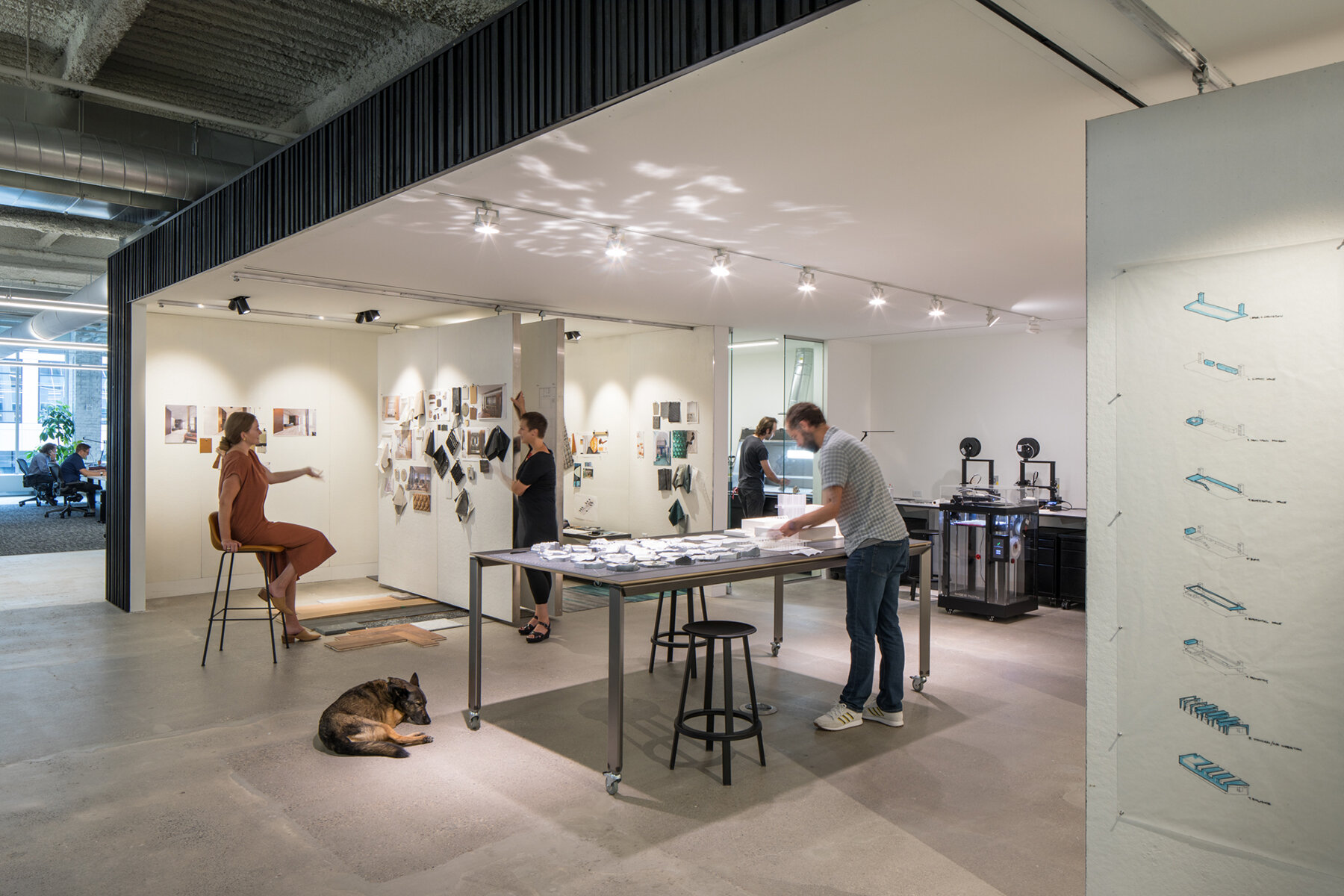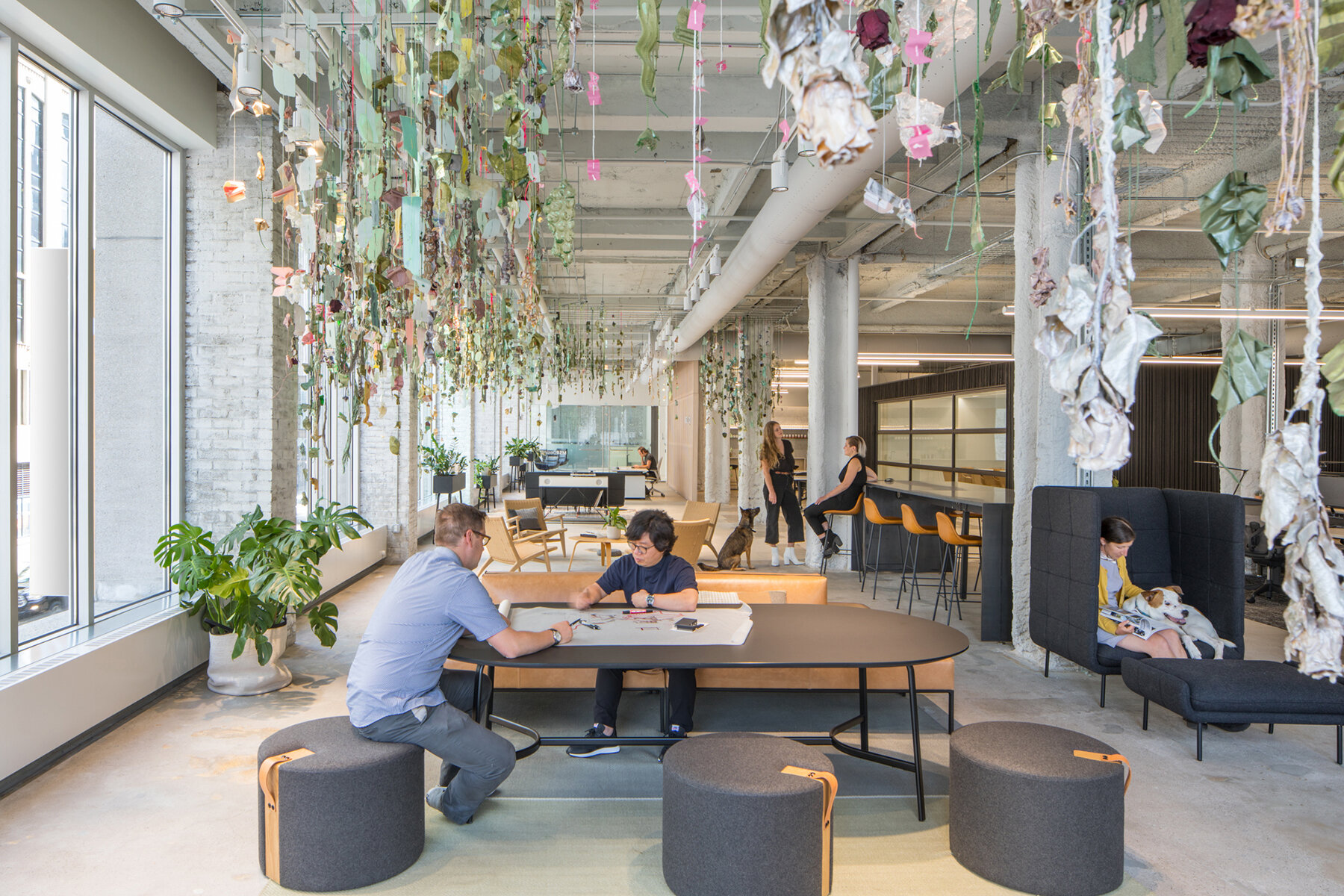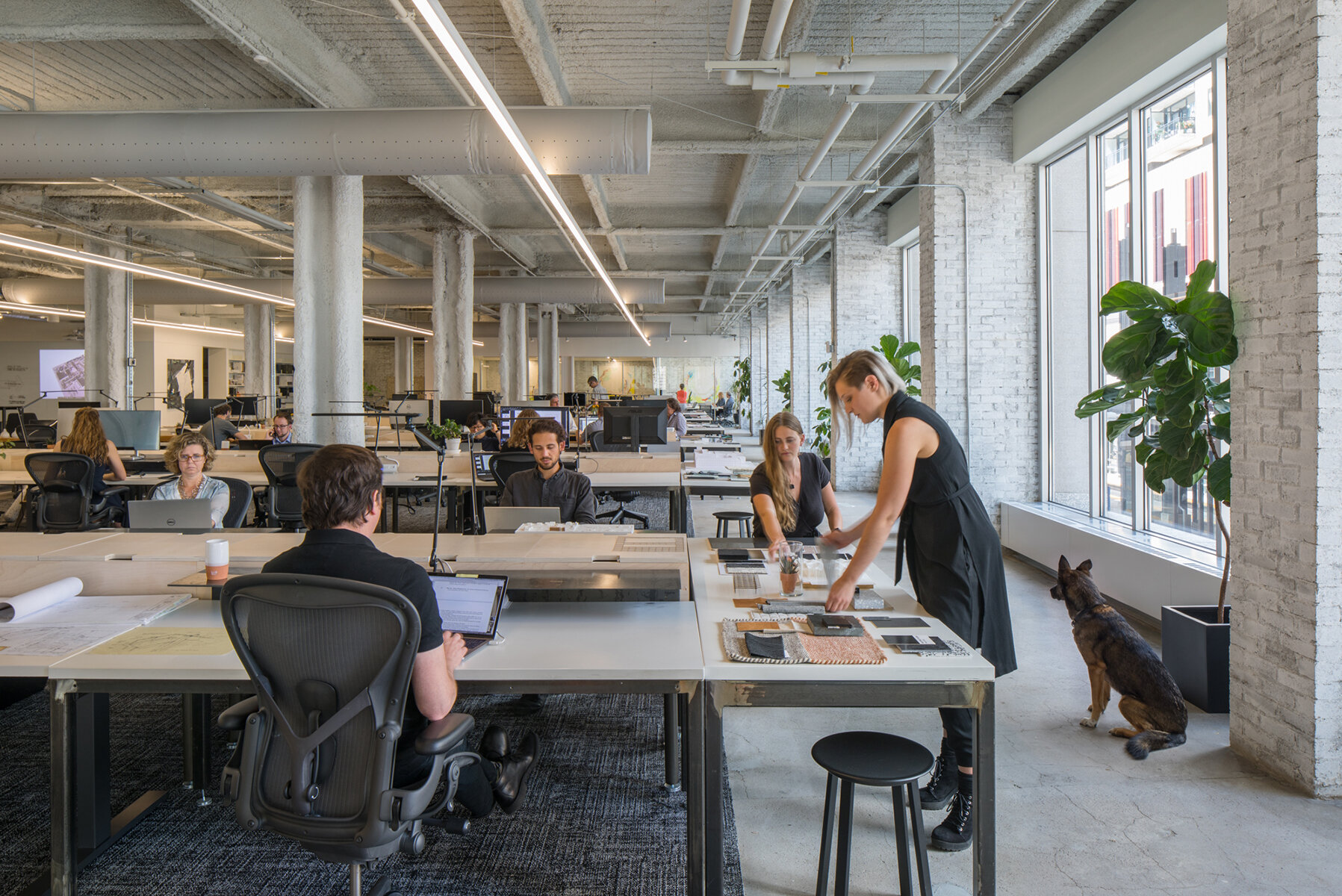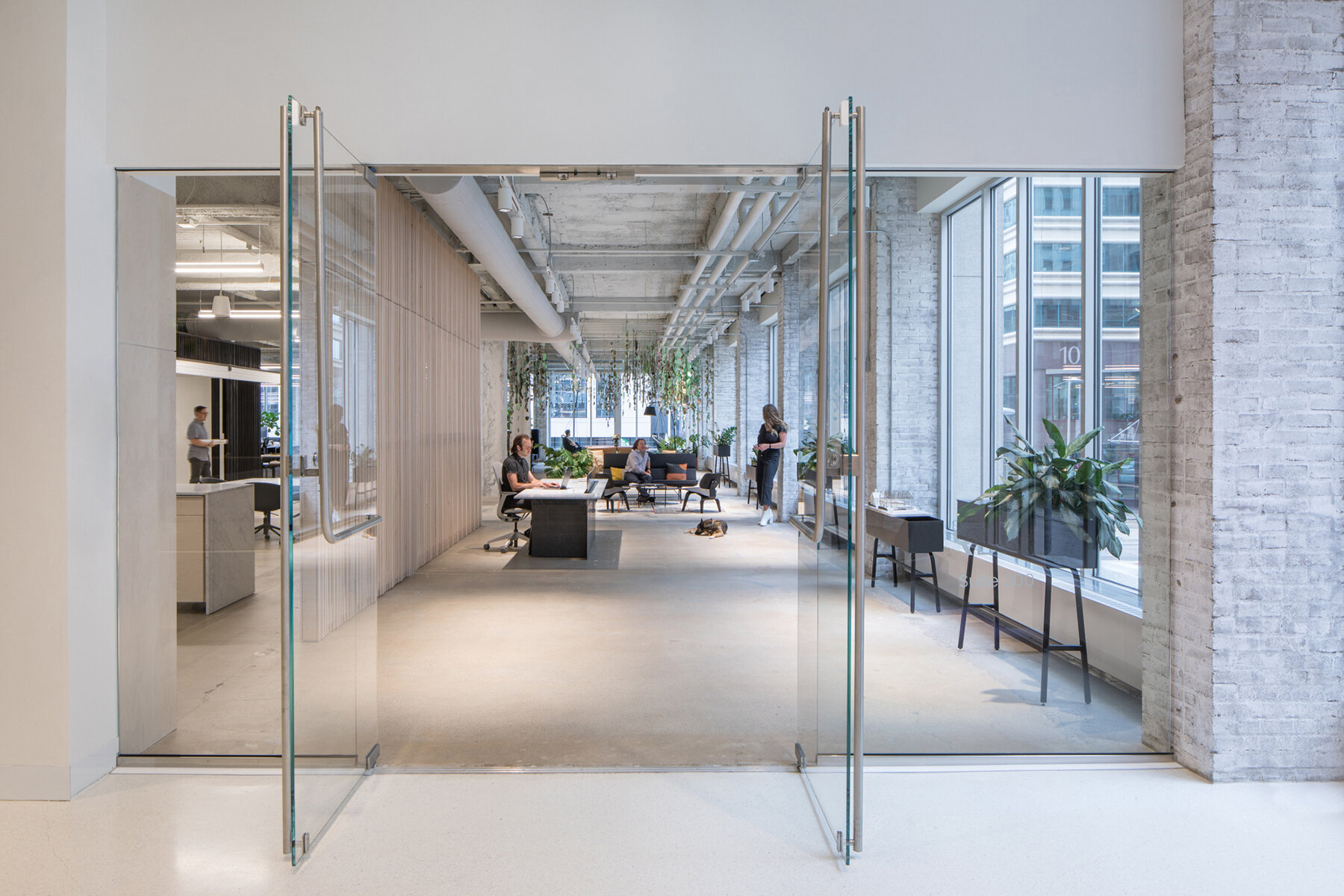A Workplace Renovation with an Aspirational Approach to Building Materials
MSR Design achieves Living Building Challenge Petal certification for its award-winning new space
By Joel Hoekstra | April 1, 2021
Open and enclosed meeting spaces near the reception area. Photo by Lara Swimmer.
FEATURE
In 2018, MSR Design began exploring the possibility of moving from its longtime home in an old flour mill in Minneapolis—a ruin that the firm had helped transform into the Mill City Museum 20 years ago, showcasing its talent for historic adaptive reuse. If it were to move, MSR knew it wanted to design an office that supported the way its designers worked today, and that highlighted a different set of values—chiefly, a commitment to workplace health and sustainability.
Later that year, firm leaders toured 510 Marquette, where more than 14,000 square feet were up for lease on the second floor, with direct access to the Minneapolis skyway system. The offices overlooked a busy intersection and light-rail stop. Busses trundled past every few minutes, and pedestrians accrued on the corners. Like MSR Design’s previous home, 510 Marquette is a building with a past: Designed by Cass Gilbert, the architect of the Minnesota State Capitol, it was completed in 1925, and for many years it housed the local branch of the Federal Reserve, though heavy renovations had stripped away most historic details. Everyone agreed: It felt right for MSR’s next chapter.
Little did the MSR team know at the time that the space would come to model a healthy work environment in a post-pandemic world.
With a lease in hand, the firm began the design process. Company-wide design-discussion workshops generated three key ideas that MSR employees wanted in the plans: The space should promote human health and well-being; inspire, support, and showcase creativity and the design process; and celebrate the firm’s culture and identity. “Everybody got to have a voice,” says senior associate and designer Rhys MacPherson. “I think that’s why the space has worked so well.”
A black-box enclosure at the center of the studio houses collaboration spaces and booths for focused work, while the open workstations enjoy natural light. All photos by Lara Swimmer.
At first glance, the new studio resembles that of a budget-minded tech startup. Workspace is fluid and nonhierarchical: Managers and interns alike occupy desks arranged in long rows. A space that can be viewed from the skyway through a large glass portal features a virtual reality studio, a glass projection wall that’s writable, a 3D printer, and a critique area.
The only interior enclosures are a few small conference rooms and a 42-by-45-foot black box containing a large conference room for client presentations and board meetings; a central making area lined with a half-dozen alcoves where designers can pin up work for critiques; and three booths for privacy and focused tasks. The large conference room abuts a kitchen/community space and is fitted with a hydraulic pivot door that can be lifted to facilitate all-employee meetings and other large gatherings. The bones of the building, from brick walls and old patches of travertine floor to fireproofed steel structure, are all left exposed.
“We wanted to push the boundaries of design and performance while proving that buildings don’t have to harm the environment.”
But the most impressive elements of the design are essentially invisible. Early in the design process, MSR Design committed to the time-consuming research needed to construct the healthiest possible workplace, free of all items listed on the International Living Future Institute’s Red List—the “worst-in-class materials prevalent in the building industry.” Going a step further, the firm is now moving toward eliminating all Red List items from its materials library. The designers also addressed concerns about clean air and noise; MSR now measures decibel levels (rattling metal ducts were replaced with much quieter fabric models) and regulates CO2 levels, VOC (volatile organic compound) levels, and indoor air quality in an effort to “clean up” the workplace environment.
MSR’s investment in an HVAC (heating, ventilation, and air conditioning) system with advanced monitors, controls, and filtration has been especially valuable during the pandemic. “I would love to say we were prescient,” says CEO and principal Traci Lesneski, Assoc. AIA. “Really, our decision to invest in creating a healthy environment, including the air we breathe, simply positioned us well for this situation.”
As the firm’s pursuit of excellence gained momentum, MacPherson was among the staffers who pushed the leadership team to commit the firm to making the office the first in Minnesota to earn Living Building Challenge Petal certification, for design achievements in materials, beauty, and equity (see below). To qualify, MSR Design used salvaged marble and other reclaimed materials, selected a high percentage of Declare products (those that bear the International Living Future Institute’s “nutritional label for products”), and worked with Stahl Construction to ensure that all waste was recycled or—if toxic and nonrecyclable—sequestered. Indoor air quality was monitored during construction to the degree that, upon completion, a typical clean-up phase was not required. “We wanted to push the boundaries of design and performance while proving that buildings don’t have to harm the environment,” says MacPherson.
On March 16, 2020, after only four months in the new space, MSR employees headed home to work remotely. With the easing of COVID-19 restrictions last summer, the firm reopened the studio for limited use with safety measures that included a temperature scanning station just outside the main entry and touchless features in the kitchen and restrooms. The HVAC system controls allow the firm to adjust fresh-air intake and exchanges based on occupancy. That feature was included in the design in response to MSR’s plans to host large events; during the pandemic, it has helped the firm save energy while keeping air quality optimized.
In December, 510 Marquette Studio was awarded a prestigious AIA Minnesota Honor Award for its achievements in four of the 10 design measures in AIA’s Framework for Design Excellence: Design for Energy, Well-Being, Resources, and Change. In April 2021, the project achieved Living Building Challenge Petal certification.
MSR is planning for a hybrid-workplace future, with some employees continuing to work from home at least part of the week. It may also sublet a portion of its space to a fellow creative firm. What hasn’t changed is the staff team’s enthusiasm for a healthy, toxin-free, highly connected studio environment.
The 510 Marquette Studio project team included MSR Design, Stahl Construction, BKBM, and MEP Associates.
PETAL CERTIFICATION
The Living Building Challenge is a framework for reaching regenerative design through achievements in seven performance areas. For full certification, projects must satisfy requirements in all seven areas, or petals: site, water, energy, health and happiness, materials, equity, and beauty. For Petal certification, projects focus on three petals, one of which must be water, energy, or materials.

